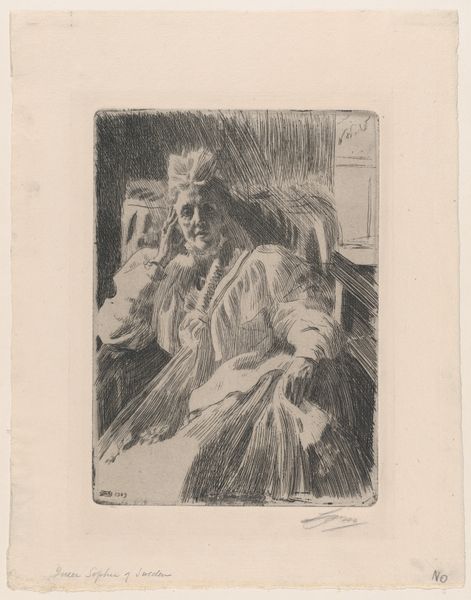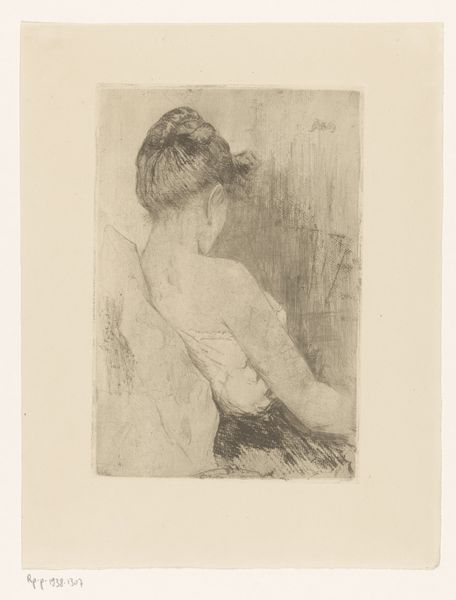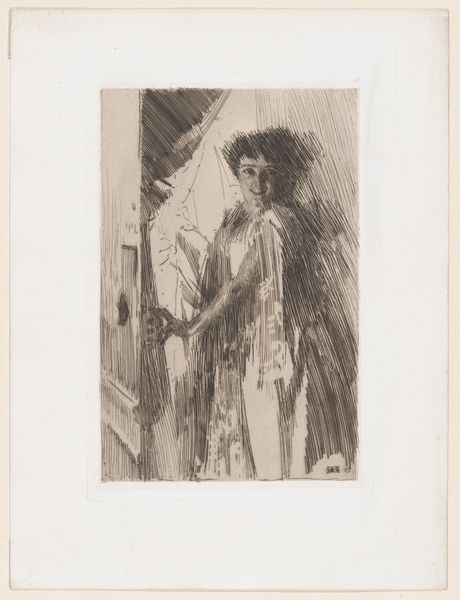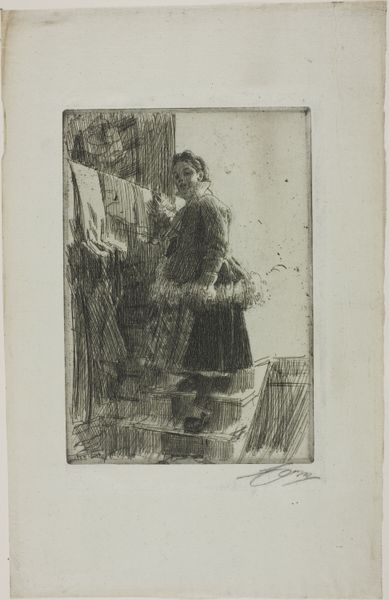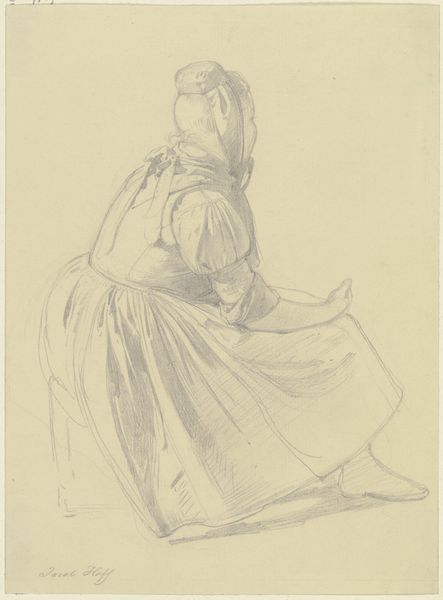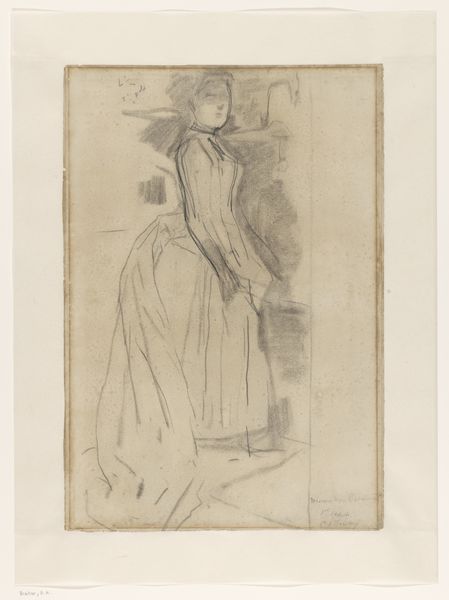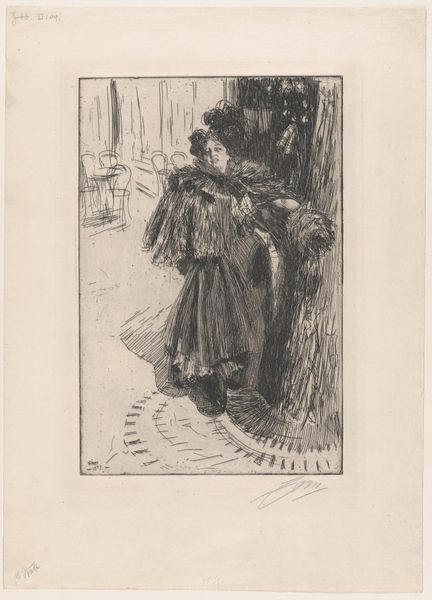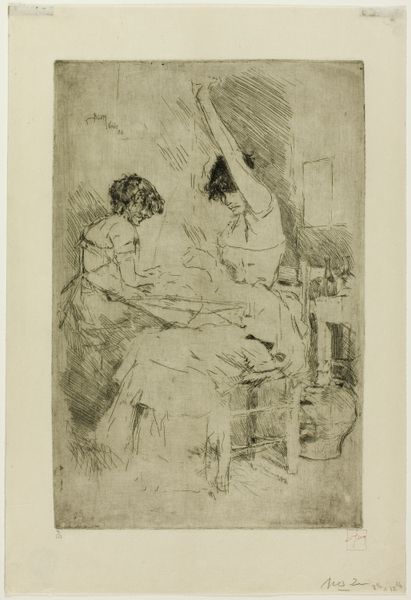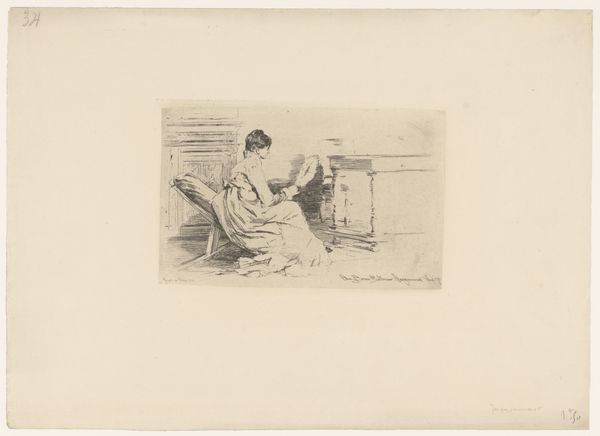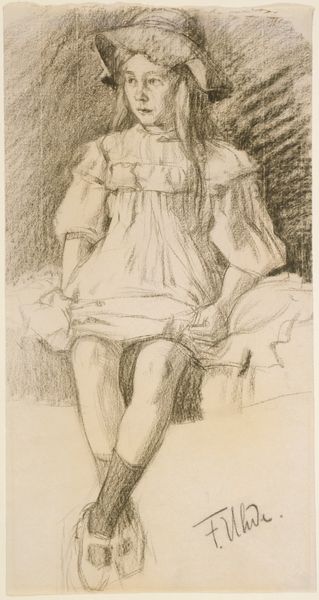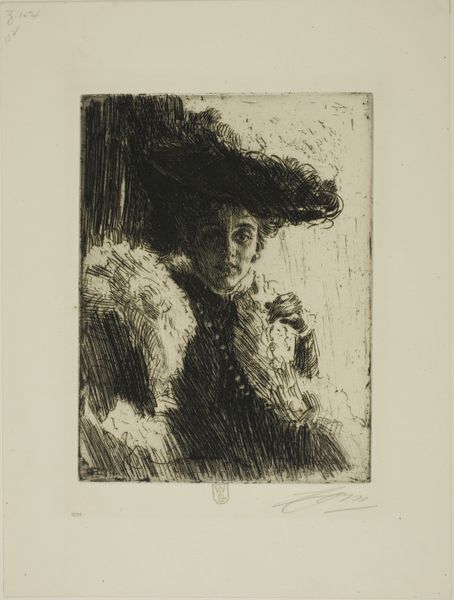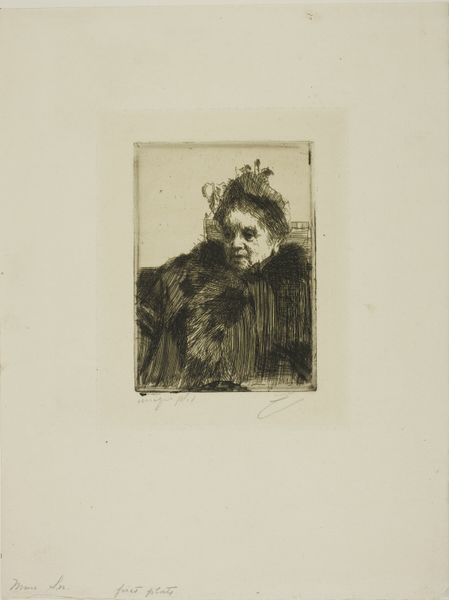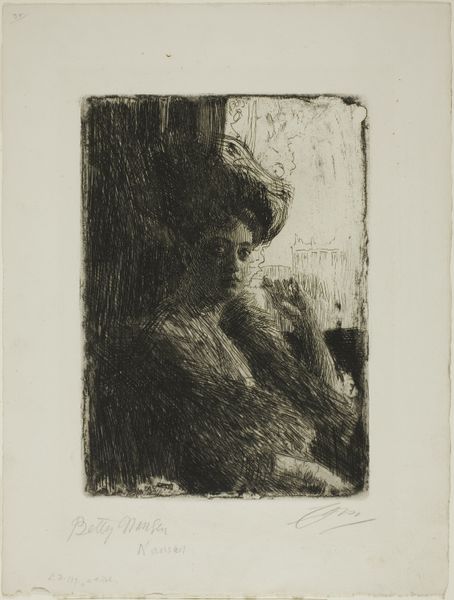
Dimensions: 276 × 228 mm (image/plate); 402 × 301 mm (sheet)
Copyright: Public Domain
Curator: Here we have Anders Zorn's etching, "H. R. H. Princess Ingeborg of Sweden II," created around 1900. What springs to mind when you see it? Editor: There's an undeniable aloofness. She's swathed in fur, almost drowning in luxury, but her gaze is direct, unreadable. Is it me, or does the crown look precariously perched? It’s as if she's both on display and holding herself back, daring you to truly see her. Curator: Indeed. Zorn, renowned for his societal portraits, captured Princess Ingeborg using the etching technique, allowing for a detailed, reproducible image fit for wider circulation. Let's consider the materials involved. Copper plates, etching needles, acid… the means to produce and disseminate this royal image reflect a certain level of industrial advancement democratizing access to portraiture. Editor: Democratizing… perhaps in reproduction, but there’s something intensely personal in the artist's hand evident in those frantic etched lines, isn't there? The sketchy quality, almost unfinished feel, suggests an immediacy, as if he captured her in a fleeting moment, despite all the pomp. That juxtaposition, for me, is endlessly fascinating. Curator: Absolutely. And consider the role of paper – a relatively inexpensive medium, making art more accessible to the masses, thus shaping social perception and bolstering Zorn’s own marketability through these reproducible prints. He wasn't just capturing a likeness; he was manufacturing celebrity. Editor: I get that. But isn't there a strange beauty, too, in the blur of fur? I find myself drawn to it as much as to her face. It’s almost like a defense, a deliberate obscuring that invites closer inspection. It challenges that pristine, rigid formalism that could quickly overtake a piece like this. Curator: That blur you mention can also be perceived as the labor of producing art being laid bare. It highlights process – each etched line signifying time, skill, and the social conditions that allowed Zorn to elevate portraiture into commodity. The value isn’t just aesthetic; it's inherent in the work performed. Editor: Well said. For me, this print captures a fleeting moment, a negotiation of power, and the vulnerability hiding beneath. Thanks for clarifying how its meaning stems not just from artistic expression but its wider social footprint too. Curator: And, for me, reconsidering these etched lines through both creative vision and the context of its mass production reveals new meaning in even familiar works, opening new critical directions and fresh understandings about this princess’s visual image.
Comments
No comments
Be the first to comment and join the conversation on the ultimate creative platform.
